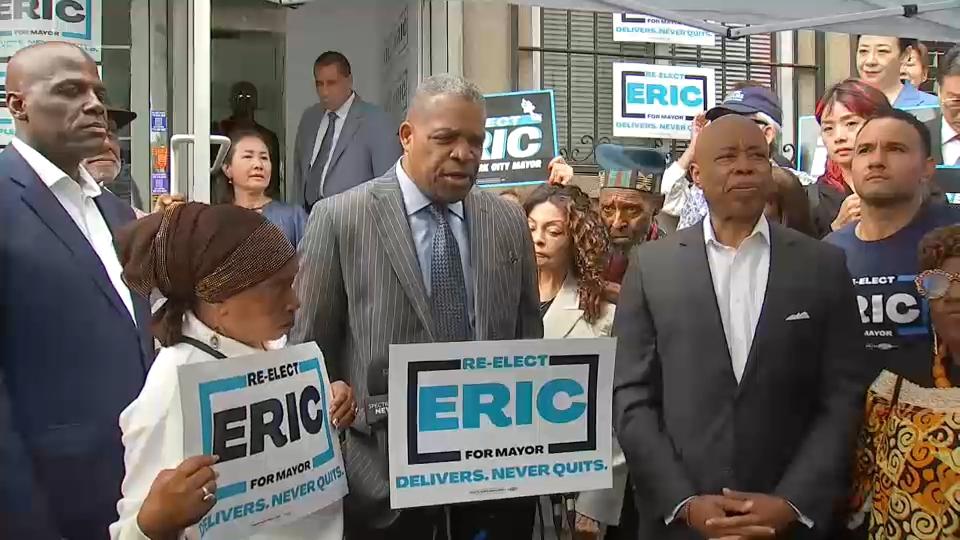Eric Adams Establishes Harlem Campaign Hub to Amplify Local Engagement
In a strategic move to deepen his connection with Harlem’s residents, Eric Adams has inaugurated a new campaign headquarters right in the neighborhood’s core. This initiative aims to enhance direct communication with community members, ensuring their concerns and aspirations shape his policy agenda. Given Harlem’s profound cultural and political legacy, securing support here is crucial for any mayoral contender, and Adams’ investment in this area highlights his focus on grassroots involvement amid escalating electoral challenges.
The timing of this office launch is particularly significant as Adams contends with disputes over his campaign’s ballot-line legitimacy. Election authorities have questioned the validity of numerous petition signatures, prompting the campaign to intensify its local presence. Their comprehensive plan includes:
- Enhanced accessibility: Hosting weekly forums to gather community feedback
- Volunteer mobilization: Recruiting dedicated neighborhood advocates and organizers
- Voter empowerment: Conducting workshops to clarify ballot procedures and key deadlines for Harlem voters
| Initiative | Action | Objective |
|---|---|---|
| Community Forums | Weekly gatherings | Elevate local voices |
| Volunteer Recruitment | Neighborhood outreach | Expand campaign footprint |
| Voter Education | Informational sessions | Boost electoral participation |
Ballot Line Controversy Sparks Debate Over Election Transparency
The New York City mayoral race has been overshadowed by a contentious dispute involving the assignment of ballot lines, with Eric Adams’ campaign office opening in Harlem amid these tensions. Critics warn that the confusion surrounding ballot placement could mislead voters and erode trust in the electoral process. This controversy has intensified calls for clearer election administration and fair handling of candidate listings.
Observers and political experts have highlighted several critical issues:
- Opaque criteria and procedures used by election officials in determining ballot line assignments
- Potential negative effects on voter turnout, especially in communities directly impacted by the dispute
- Implications for future elections regarding administrative fairness and candidate representation
| Concern | Effect | Election Officials’ Response |
|---|---|---|
| Ballot line allocation | Voter confusion risk | Ongoing review process |
| Delayed communications | Campaign disruptions | Commitment to improvements |
| Transparency issues | Declining public trust | Scheduled public hearings |
Adams Campaign Advocates for Clear and Equitable Ballot Access Procedures
Representatives from Eric Adams’ team have voiced growing dissatisfaction with what they describe as unclear and inconsistent practices by election authorities regarding ballot access. They emphasize that voters deserve transparency to fully grasp the nature of the dispute, which threatens to complicate the mayoral contest and potentially disenfranchise supporters.
The campaign’s primary requests include:
- Publicly available, detailed explanations of ballot qualification standards
- Prompt and clear communication to prevent confusion before the primary election
- An unbiased resolution process overseen by independent monitors
To illustrate the discrepancies cited by the campaign, the table below contrasts official election requirements with the campaign’s interpretations:
| Requirement | Election Officials’ Position | Campaign’s Perspective |
|---|---|---|
| Signature Threshold | Minimum 5,000 valid signatures | Submission of over 6,200 verified signatures |
| Filing Deadlines | 10 days prior to filing date | Claims of delayed notification |
| Verification Method | Random sampling audit | Demand for full audit transparency |
Effective Tactics for Overcoming Electoral Obstacles and Connecting with Harlem Voters
Campaign strategists stress the importance of localized outreach efforts to navigate the current election challenges in Harlem. By staffing the newly opened campaign office with a dedicated team, Adams’ campaign seeks to build meaningful relationships with community leaders, local enterprises, and grassroots groups. This hands-on approach not only mitigates the impact of ballot-line disputes but also fosters trust and demonstrates a genuine commitment to Harlem’s unique needs.
The campaign’s engagement strategy blends traditional and modern communication methods to reach a broad and diverse electorate. Key components include:
- Organizing community forums and town hall meetings
- Collaborating with local faith-based organizations and cultural institutions
- Leveraging social media channels for timely updates and voter education
- Providing multilingual resources to ensure inclusivity across Harlem’s diverse population
| Approach | Purpose | Expected Outcome |
|---|---|---|
| Community Forums | Facilitate direct voter interaction | Build stronger community trust and support |
| Multilingual Outreach | Engage diverse voter groups | Expand voter awareness and participation |
| Social Media Engagement | Deliver real-time campaign updates | Increase voter turnout and enthusiasm |
Final Thoughts on Adams’ Harlem Campaign Expansion Amid Election Disputes
As the New York City mayoral contest heats up, Eric Adams’ establishment of a Harlem campaign office highlights his dedication to engaging with vital communities despite ongoing ballot access controversies. With the race entering a decisive phase, the effectiveness of these grassroots efforts and the resolution of election disputes will be pivotal in shaping voter sentiment and the overall direction of the campaign in the weeks to come.













